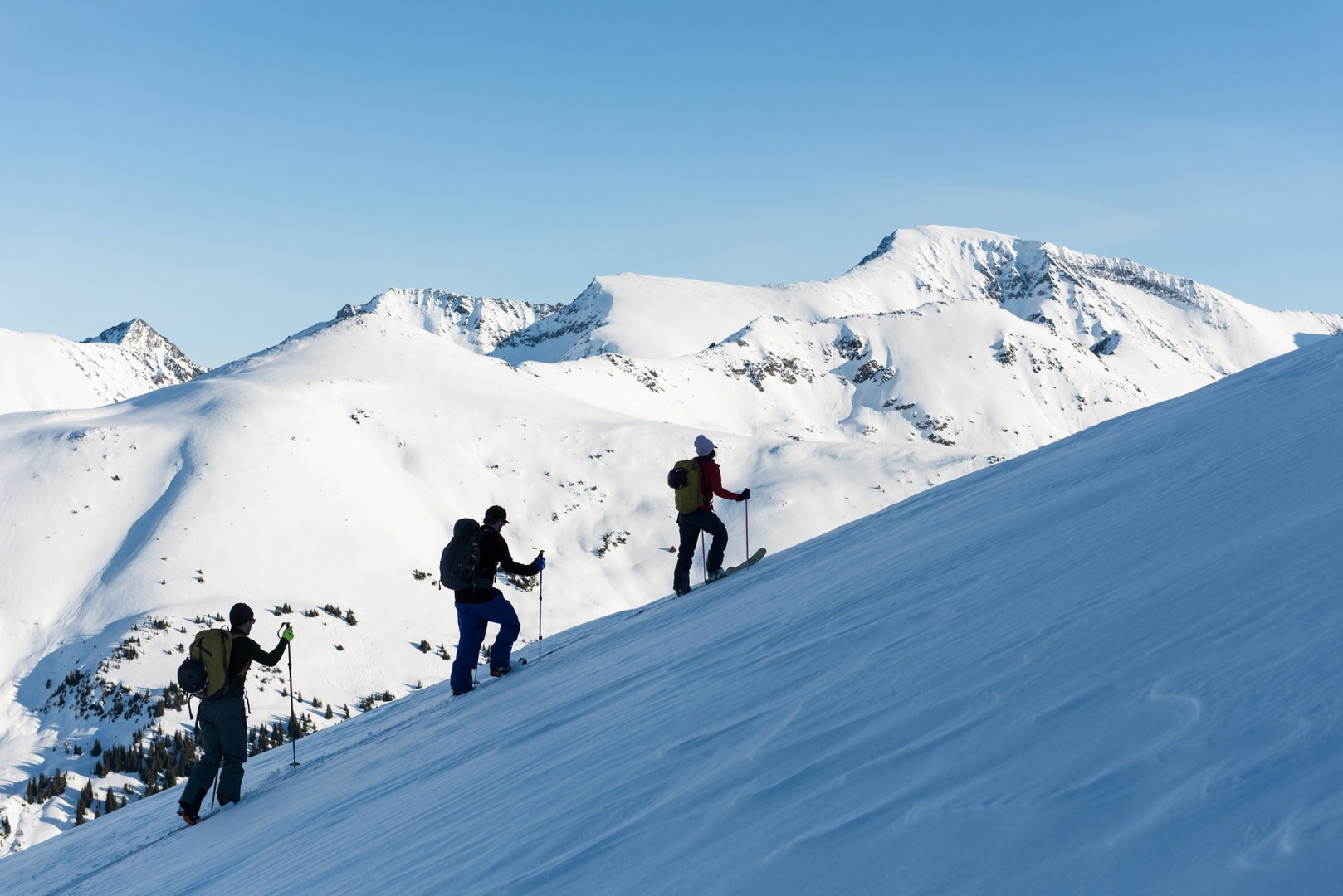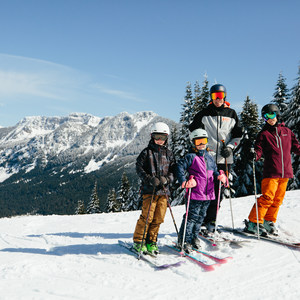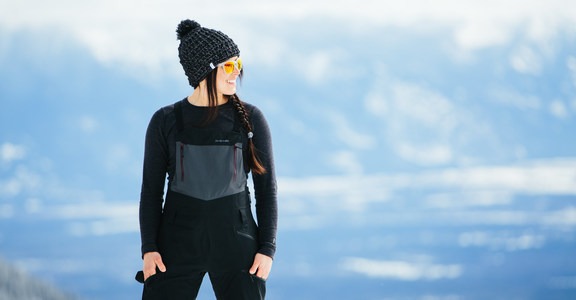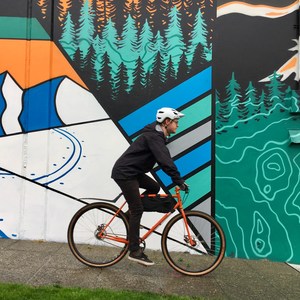IMPORTANT: You should always carry an avalanche beacon, shovel, and probe when traveling in avalanche terrain, and you should know how to use them. Backcountry travel requires an acceptance of the risks involved (avalanches are not the only danger), and it implies a willingness to take responsibility for educating yourself about these dangers and ways to mitigate them. We recommend that backcountry travelers take an AIARE Level One class or the equivalent and practice the skills they learn there regularly with their partners.
As splitboarding gear gets better and better, more and more people are taking their boards to the backcountry. But, whether you’ll be heading out to use your new splitboard in the backcountry for the first time this season or you’re a seasoned expert, it’s always a good idea to review your gear to make sure you’re covering the essentials.
Board, boots, poles, bindings, and skins
The most obvious splitboarding essential is your board, of course. If you’re just starting out, look for a splitboard with a similar size, shape, and flex profile to your preferred resort board. That will help make for an easy transition. Once you’ve spent some time in the backcountry and figured out what sort of board you like to tour on, there is a huge range of splitboard shapes designed for backcountry powder surfing.
While there are plenty of awesome splitboard-specific boots available, when you’re just starting out, it’s fine to use your normal in-bounds boots until you figure out what you want from a splitboard boot.
You’ll also need backcountry bindings for your splitboard. These binding systems have a hinged latching system that allows you to transition them from uphill mode, where they each sit in line with one of the halves of your board (like skis), to downhill mode, where they act like traditional snowboard bindings. The Voile system allows you to use your current bindings with a splitboard, but these are generally a little heavier than dedicated touring bindings, which have the interface between the board and the bindings built in. Additionally, splitboard specific bindings, are lighter, more durable, and have features like highbacks with a greater range of motion that help out when skinning. The Karakorum system is a different iteration of a splitboard bindings, with its own interface.
You’ll also need some collapsible splitboard poles. These extend to help you skin up, but they break down small enough to fit in your pack while you’re riding. As a snowboarder, you might not initially see the need for poles, but trust us, you do not want to go without them.
The final part of the equation is snowboard skins. There is a wide selection of skin styles and materials. As a rule of thumb, it’s a good idea to start out with nylon skins; they’re the most durable option, and they offer more grip. They’ll stand up to abuse and make steep and icy skin tracks easier for beginners. Once you’ve developed your skinning technique you can switch to lighter mohair skins, or a mix, which offer smoother glide, but less grip.
Avalanche gear
While it’s impossible to go splitboarding without a board, bindings, and skins, your most important splitboarding equipment is your backcountry gear. Your life depends on having a good beacon, shovel, and probe, and knowing how to use them. Take an avalanche safety class before you head out into the backcountry.
A good backcountry backpack will fit you comfortably, have attachments to carry your board, will have space for food, extra layers, and your skins, and will have a dedicated, easy access pocket for your avalanche gear. Make sure your backpack is big enough - it’s a bad idea to cram your pack so full that you’re not able to close the pack after you have to get something out. About 30 Liters is a good day pack size. It’s a good idea to carry a small repair kit in your pack as well. You should have a multitool to tighten anything on your bindings as well as some zip ties and duct tape. A few repair essentials can be the difference between a great powder day, and an emergency situation.
Look for an avalanche shovel that’s made mostly out of metal with a “D” handled grip. This grip shape is easier to use and allows you to dig faster. Don’t try to skimp and save money on your shovel; if there’s an emergency, you need to be able to trust your shovel and know that it can hold up to the task.
Make sure you know how to assemble your shovel and your avalanche probe quickly, even with gloves on, and store them in an easy-to-access part of your pack. If there’s an emergency, every second spent fumbling with your gear puts everyone in your group at risk.
Finally, get a good avalanche beacon and learn how to use it. Make sure you're always wearing it and that it’s turned on every time you enter the backcountry. Practice using it often so that it becomes second nature and there’s no chance you’ll become flustered or confused in an emergency.
Outerwear
Because you’re earning your turns, you’ll get hot, sweaty, and experience many more temperature changes splitboarding than you do when riding inbounds. If you dress in layers you will be able to shed your shell when you’re skinning up and easily slip it back on for the descent.
You may need to tweak your kit if you run hot or cold, but it’s always a good idea to start with the tried-and-true combo of a waterproof shell over an insulating layer with a wicking base layer next to your skin. We’re a big fan of Smartwool baselayers for splitboarding due to their great wicking and quick drying properties.
Backcountry specific outerwear has pockets specially designed for your skins and avalanche beacon, which makes keeping them safe and accessible much easier. The gear also features well-placed vents that allow you to regulate your temperature while skinning, and it is generally made of lighter materials that pack down smaller when you need to fit spare layers in your pack. Always make sure to carry an extra layer or two; you never know when the weather will change or you’ll run into some sort of emergency that means you have to hunker down and stay warm for a while. It’s also a good idea to bring more than one pair of gloves or mittens, a lighter pair for when you’re skinning up and a warmer pair for when you’re riding down.
Your kit should change with the length of your adventure, yet no matter how deep into the backcountry you go, you should plan on packing these essentials at the very least. As you and your partners gain experience in the backcountry, you will find out what gear best fits your needs and style. Looking for more beginner tips? Check out our guide to getting started splitboarding.
We are evo - a ski, snowboard, mountain bike, surf, wake, and skate retailer based in Seattle, Washington, USA, with stores located in Seattle, Portland, and Denver. We also offer trips to remote locations across the globe in search of world-class powder turns, epic waves, and legendary mountain biking through our evoTrip Adventure Travel Trips.
evo explores the collaboration between culture and sport by seamlessly joining art, music, streetwear, skateboarding, snowboarding, skiing, mountain biking and wakeboarding. Our aim is to bring all things relevant to the urban, action sports lifestyle into one creative space. Whether it is on the website, on the phone or in our stores, our aim is to make all who come into contact with evo feel welcome and excited about their experience.






Comments
Sign In and share them.